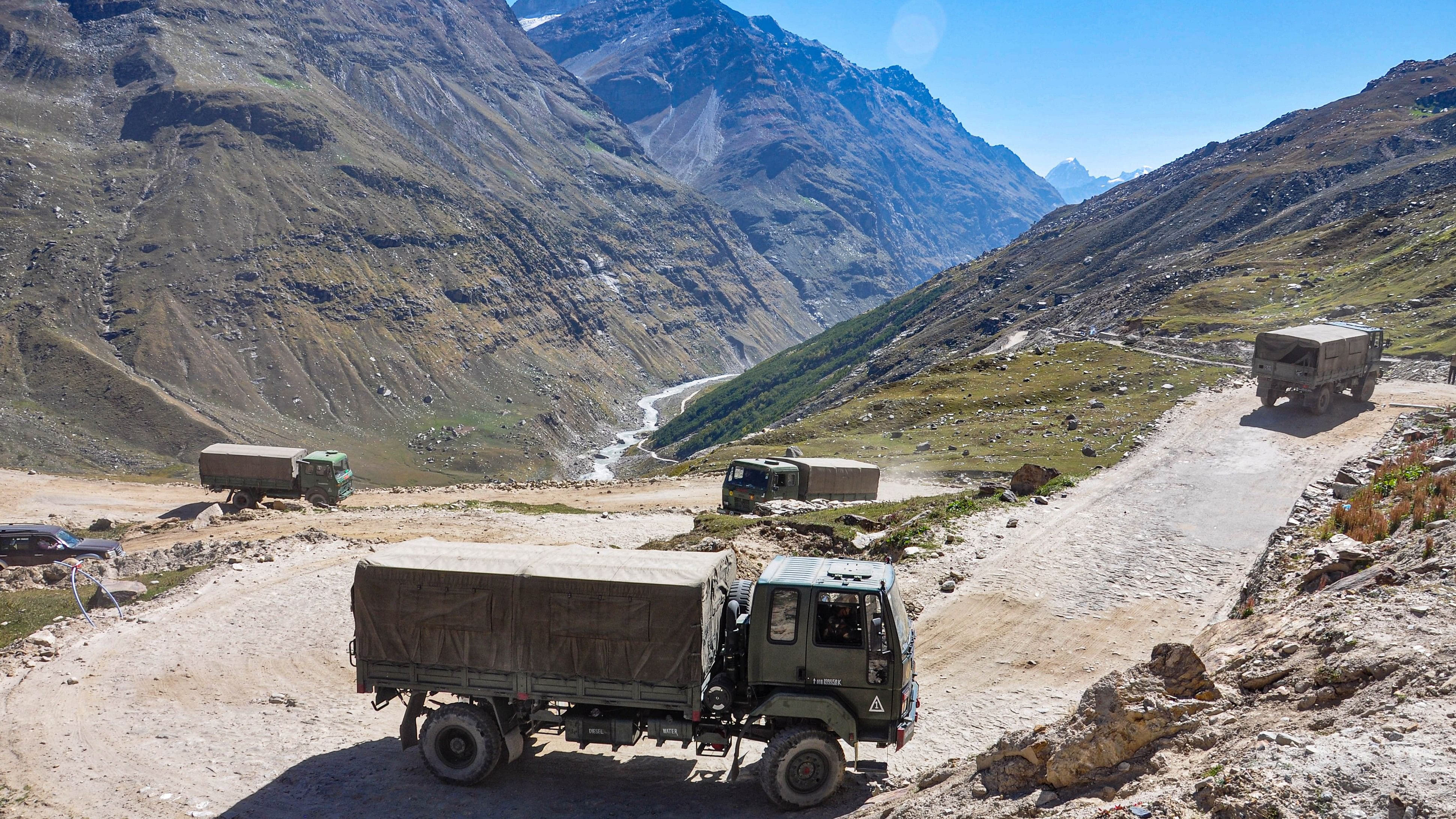
File photograph used for representational purposes only
Credit: PTI Photo
New Delhi: The Indian Army on Monday began patrolling at Depsang sector near the LAC in eastern Ladakh even though such troop deployment may be limited to one or two points for the time being.
“Following the consensus reached between the Indian and Chinese Side for disengagement and resumption of patrolling in Depsang and Demchok, the Indian Army patrol to one of the patrolling points in Depsang was successfully conducted today,” Leh-based 14 Corps of the Indian Army said in a statement.
“This is yet another positive step towards maintaining peace and tranquility on the Line of Actual Control,” it noted.
This happened three days after an army team began patrolling in the Demchok sector.
Depsang and Demchok were the last two friction points during the four and half years long tense stand-off between Indian and Chinese troops in eastern Ladakh.
While disputes on other flashpoints were sorted out by mutually agreeing to create buffer zones, Depsang and Demchok remained two sore points as they were considered “legacy” issues.
On Oct 21, New Delhi and Beijing announced that the two sides agreed on disengagement in Depsang and Demchok sectors and patrolling would resume after the troops went back to their pre April 2020 positions.
Since 2020, the Chinese troops have blocked five patrolling points in Depsang and two in Demchok besides the local’s access to grazing fields.
Sources said patrolling in Depsang would initially be restricted to one or two patrolling points as deploying troops to touch base on all the five points in such harsh terrain would take time and require a higher level of coordination between ground commanders from the Indian Army and Chinese People's Liberation Army.
The patrolling is being conducted in a coordinated manner under which local commanders are being informed about the patrolling routes in advance.
Since the LAC flare-up, the PLA troops blocked India’s access to five patrolling points in Depsang – PP 10, 11, 11A, 12 and 13 – that are close to the LAC.
The area including Dault Beg Oldie airbase is a part of what is known as Sub Sector North in the India military parlance.
East of the Depsang plain lies Aksai Chin, an area illegally occupied by China since the 1950s.
The region is strategically important not only due to its proximity to Siachen glacier and Karakoram range, but also because of the flat nature of the terrain.
The five patrolling points are located in an area called bottleneck which opens on a flat area that gives India a vantage point to keep an eye on two crucial Chinese roads connecting Tibet with Xinjiang.
Last month Prime Minister Narendra Modi and China President Xi Jinping endorsed the agreement on patrolling and disengagement along the LAC during their bilateral meeting on the sidelines of the BRICS Summit in Russia.
